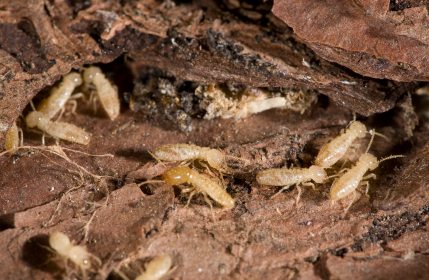Termites are a contractor’s worst nightmare. This group of eusocial insects are classified at the taxonomic rank of order isopteran; they feed on dead plants and trees, as well as dead parts of living trees. This includes wood in the soil. A termite’s mouth is able to tear pieces of woody material. The damage done by termites is not immediately visible to the naked eye, because they rarely emerge from the soil in the form of mud tubes, or food sources through which they are tunneling. Termites are grouped as Subterranean, dry wood and damp wood based on their habitation. Since the activity of dry wood and damp wood termites is very confined, it is only the subterranean species of termites which are more prevalent and cause severe damage to our property. For anew building construction it is best to get the soil treated while the foundations are being laid, as a continuous and uniform termiticidal barrier between the soil and building will provide longer and warranted protection to the entire structure at a reasonablecost. Building contractors that take shortcuts by not doing soil treatments prior to building aren’t doing themselves any favours as they will not be able to drill everywhere during the construction process. This is why it is important that during construction you should consider using concrete for the foundations and leave a ventilation space between the soil and wood to prevent termite activity. One should also cover exposed wood surfaces with a sealant or metal barrier. House foundations, shelves and even books are all possible feeding sites for termites. Termites can cause major structural damage to human dwellings, so regardless of whether you are thinking of installing a baiting system or a liquid termite treatment, remember that using the right combination of treatments in the right concentration from reputable providers will allow for a 5 year guarantee. For the walls, generally a water-based termiticides is used; however, infested and fixed wood is treated with oil-based termiticides. If access to concealed areas is denied the treatment may fail to provide the desired results, which means termites have access to the false ceiling, loft, plumbing duct, electrical shaft, and unused/ closed room. As more and more houses are built on termite territory, the risk of termite damage to properties increases. “As vegetation is cleared to build more houses or properties, termites which would have previously fed on the vegetation or tree wood turn to wooden structures nearby” said Mario Pluke, the National Technical Manager for Rentokil. Never under-estimate the power of these little things. They might look harmless, but they have the power to silently destroy your house by entering from beneath the soil, weakening and pulling down the unmaintained old wooden structures. Sagging and squeaking noises on hardwood floors, small hidden tunnels, cracks on the wall and loose boards are all signs potential termite infestation. It is advisable for a contractor to treat the soil before the construction process takes place, to avoid termite visitation in future.


